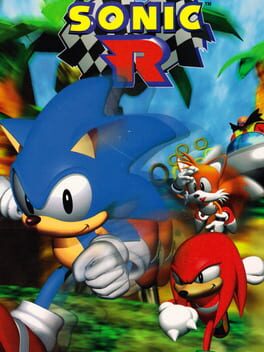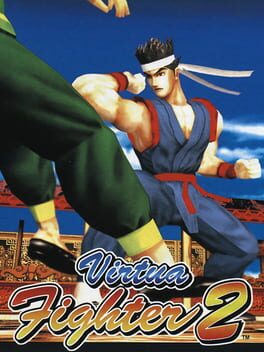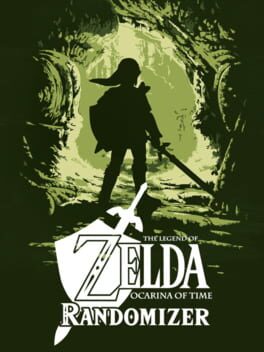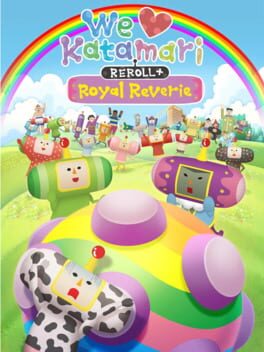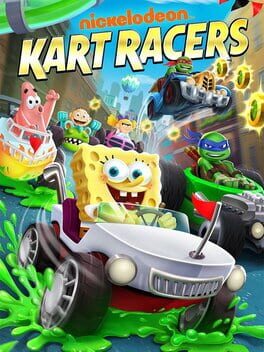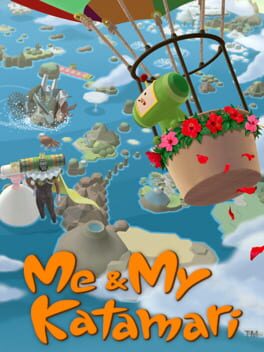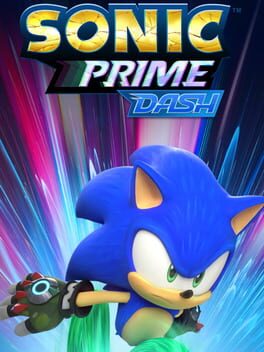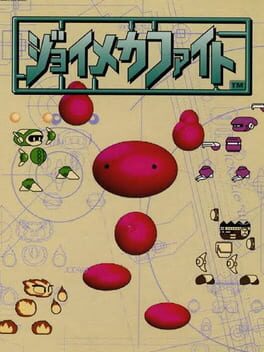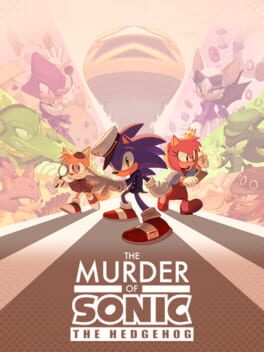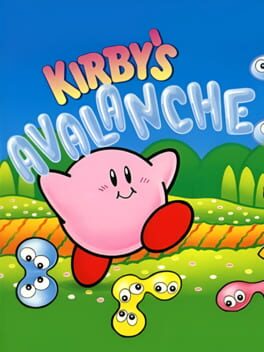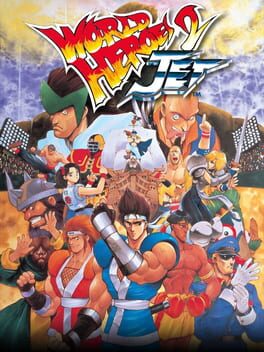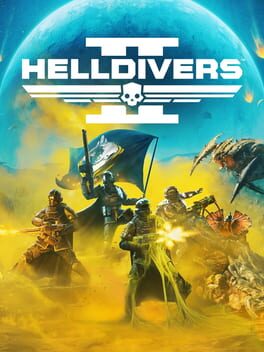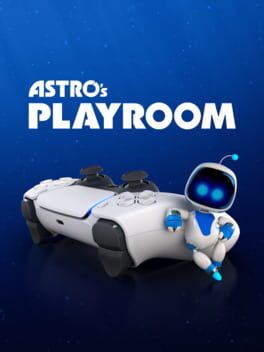Kago
184 Reviews liked by Kago
Sonic R
1998
Virtua Fighter 2
1994
Anyone who has ever played and really enjoyed a modern 3D fighting title like Tekken 8, Soulcalibur VI, or what have you, and then immediately went back to play some of the earlier 3D fighters like the original Virtua Fighter would probably be asking themselves “why do I feel nothing but pain”, but for what it is worth, that game still somewhat holds up as a game, as well as what it meant for the genre. If you view it as a fighting game, plain and simple, it is definitely not something I would wanna touch with a ten-foot pole, but as a gateway for many other fighters to enter the realm of 3D, it managed to do a pretty good job, while also bringing the awkward, yet fun enough gameplay that managed to impress plenty back when it came out, as well as me whenever I decided to check it out four months ago. Unlike with Virtua Racing though, this wasn’t just gonna be a one-time experiment in the Virtua series, as thanks to its immense success back in the day, the game would spawn numerous sequels, spin-offs, and merchandise as a result, and it would eventually lead to the sequel that would release just one year later, simply known as Virtua Fighter 2.
Now, I have played quite a handful of fighting games at this point now on this website, and while I am still somehow garbage at almost every single one I play, I know what to expect when it comes to any of them that I play, especially when it comes to fighting game sequels. The original Virtua Fighter was already as barebones as it gets when it comes to the content it offered, so I assumed that Virtua Fighter 2 would follow suit, most likely not focusing on changing up the main formula too often, but polishing it to where it would be more approachable and addicting than that of the previous title. Then I got around to playing the game, and while I unfortunately found my assumptions to be correct, I did find that, as a sequel, the game manages to surpass the original in just about every way, and I would say it is a good time. Once again, this certainly won’t be my go-to choice if I were to recommend you a 3D fighting game, but for what we got here, it took what the original game had and made it much better, feeling like an actual game rather than a tech demo.
The story is basically unchanged from the original, so if you were a fan of the lack of story from the original game, fear not, because this game manages to keep that trend up, but that is to be expected from a series like this, the graphics are a MASSIVE improvement from the original game, where the environments look great and have a lot of variety, and the fighters look like actual people rather than blocky masses of nightmare fuel, so that’s great to see, the music is pretty good, having plenty of rocking tunes for you to listen to while watching these 3D puppets mash each other in the face, even if none of the tracks really jump out to me in my mind at the moment, and the gameplay/control is also unchanged from the original game, with there being one or two changes here or there, but for this title, we have yet another “been there, done that, bought that t-shirt” situation here.
The game is a 3D fighting game, where you take control of 11 fighters, such as all of the original fighters from the previous game or two new ones, take on a set of opponents that you will need to take down one by one, throw plenty of punches, kicks, throws, body slams, or whatever else your character can do to deplete your opponent’s HP to zero, make sure to block and dodge at the right times to make sure that you can protect yourself in the process, and… that is still about it. This game sticks very close to its roots in that regard, where it makes sure to not change up the gameplay formula whatsoever, and instead focuses on everything around it to make the game feel more enjoyable and lively. That could be good for those who are big fans of the original, but bad for those who wanted more out of that game, and for me personally……… I mean, it still works pretty well, so I don’t have too much of a problem with it.
The main differences that can be seen in the game comes down to the visuals and the variety with the locations. They are a massive improvement from what we saw in the original game, looking very smooth and detailed for 1994, and while they still move around as gracefully as an early 3D model could (complete with moon jumping), it at least feels like I am actually controlling real people, which is a lot more than I can say for that original game. Not to mention, the stages you have fought in are given a massive upgrade, where in the original game, you pretty much just fought in one stage the entire way through, but here, there are plenty of different areas you fight in, most of them being… a bit generic, but still looking good for the time. Aside from all that though, there isn’t much more to say about the game. There are some new characters, who are fun to mess around with, and there are some versions of the game that allow you to adjust the size and the arena and how much health you have, but other then that, this is pretty much just the same ol’ shit you have come to expect from Virtua Fighter at this point.
So, to mix things up, I figured I would also go ahead and try out the Sega Genesis version of the game as well, not just because it is available to me through the NSO, but also cause I wanna see just how they would take a game like Virtua Fighter, the game SOLELY known for being “the 3D fighter”, and put it on a 2D system. Well, to the surprise of nobody, the game was turned into 2D, with all of the models being fully recreated with 2D sprites fighting in 2D environments, which is impressive enough for a port, and a lot of the music, character animations, and moves do look, feel, and sound a lot like the original version. It is a good enough port of the original game for the Genesis, but if I were given a choice between the two, I would definitely choose the original version over this version any day. Sure, the port does a good enough job at bringing the game to a home console, but one of the defining aspects of this series was that, again, it is 3D, so by removing that aspect of the game, it becomes yet another generic 2D fighter that I wouldn’t play over any other game in the genre like Street Fighter II or Mortal Kombat.
But anyway, overall, despite a lack of change in the gameplay and still not being on the same level as some more famous 2D fighters, Virtua Fighter 2 is a definite improvement over the original game in plenty of ways, looking much better, having more variety in both the stages and the characters you can play as, and making the gameplay much more polished and fun despite how limited it is. I would recommend it for those who loved the original game, as well as those who want to check out some of the earlier 3D fighting games out there, because while it may not be able to win you over fully, it could surely provide a fun enough time messing around with it, especially with a friend to join you. Let’s just hope that, for the next game, they actually manage to change things up for a change and-... wait… this series also got game updates like Street Fighter did? annoyed sigh.............. of course, because if Street Fighter did it, then that means EVERYONE has to do it, because it’s such a great idea, right?!
Game #564
Now, I have played quite a handful of fighting games at this point now on this website, and while I am still somehow garbage at almost every single one I play, I know what to expect when it comes to any of them that I play, especially when it comes to fighting game sequels. The original Virtua Fighter was already as barebones as it gets when it comes to the content it offered, so I assumed that Virtua Fighter 2 would follow suit, most likely not focusing on changing up the main formula too often, but polishing it to where it would be more approachable and addicting than that of the previous title. Then I got around to playing the game, and while I unfortunately found my assumptions to be correct, I did find that, as a sequel, the game manages to surpass the original in just about every way, and I would say it is a good time. Once again, this certainly won’t be my go-to choice if I were to recommend you a 3D fighting game, but for what we got here, it took what the original game had and made it much better, feeling like an actual game rather than a tech demo.
The story is basically unchanged from the original, so if you were a fan of the lack of story from the original game, fear not, because this game manages to keep that trend up, but that is to be expected from a series like this, the graphics are a MASSIVE improvement from the original game, where the environments look great and have a lot of variety, and the fighters look like actual people rather than blocky masses of nightmare fuel, so that’s great to see, the music is pretty good, having plenty of rocking tunes for you to listen to while watching these 3D puppets mash each other in the face, even if none of the tracks really jump out to me in my mind at the moment, and the gameplay/control is also unchanged from the original game, with there being one or two changes here or there, but for this title, we have yet another “been there, done that, bought that t-shirt” situation here.
The game is a 3D fighting game, where you take control of 11 fighters, such as all of the original fighters from the previous game or two new ones, take on a set of opponents that you will need to take down one by one, throw plenty of punches, kicks, throws, body slams, or whatever else your character can do to deplete your opponent’s HP to zero, make sure to block and dodge at the right times to make sure that you can protect yourself in the process, and… that is still about it. This game sticks very close to its roots in that regard, where it makes sure to not change up the gameplay formula whatsoever, and instead focuses on everything around it to make the game feel more enjoyable and lively. That could be good for those who are big fans of the original, but bad for those who wanted more out of that game, and for me personally……… I mean, it still works pretty well, so I don’t have too much of a problem with it.
The main differences that can be seen in the game comes down to the visuals and the variety with the locations. They are a massive improvement from what we saw in the original game, looking very smooth and detailed for 1994, and while they still move around as gracefully as an early 3D model could (complete with moon jumping), it at least feels like I am actually controlling real people, which is a lot more than I can say for that original game. Not to mention, the stages you have fought in are given a massive upgrade, where in the original game, you pretty much just fought in one stage the entire way through, but here, there are plenty of different areas you fight in, most of them being… a bit generic, but still looking good for the time. Aside from all that though, there isn’t much more to say about the game. There are some new characters, who are fun to mess around with, and there are some versions of the game that allow you to adjust the size and the arena and how much health you have, but other then that, this is pretty much just the same ol’ shit you have come to expect from Virtua Fighter at this point.
So, to mix things up, I figured I would also go ahead and try out the Sega Genesis version of the game as well, not just because it is available to me through the NSO, but also cause I wanna see just how they would take a game like Virtua Fighter, the game SOLELY known for being “the 3D fighter”, and put it on a 2D system. Well, to the surprise of nobody, the game was turned into 2D, with all of the models being fully recreated with 2D sprites fighting in 2D environments, which is impressive enough for a port, and a lot of the music, character animations, and moves do look, feel, and sound a lot like the original version. It is a good enough port of the original game for the Genesis, but if I were given a choice between the two, I would definitely choose the original version over this version any day. Sure, the port does a good enough job at bringing the game to a home console, but one of the defining aspects of this series was that, again, it is 3D, so by removing that aspect of the game, it becomes yet another generic 2D fighter that I wouldn’t play over any other game in the genre like Street Fighter II or Mortal Kombat.
But anyway, overall, despite a lack of change in the gameplay and still not being on the same level as some more famous 2D fighters, Virtua Fighter 2 is a definite improvement over the original game in plenty of ways, looking much better, having more variety in both the stages and the characters you can play as, and making the gameplay much more polished and fun despite how limited it is. I would recommend it for those who loved the original game, as well as those who want to check out some of the earlier 3D fighting games out there, because while it may not be able to win you over fully, it could surely provide a fun enough time messing around with it, especially with a friend to join you. Let’s just hope that, for the next game, they actually manage to change things up for a change and-... wait… this series also got game updates like Street Fighter did? annoyed sigh.............. of course, because if Street Fighter did it, then that means EVERYONE has to do it, because it’s such a great idea, right?!
Game #564
I had no sword at all for two and a half hours.
I eventually found Biggoron's Sword on sale for 15 Rupees in the Goron City shop as Adult Link. However, as an incredibly frustrated young Alex learned in 1999, you cannot defeat Ganon in Ocarina of Time with the Biggoron Sword. In order to finish the game, the final blow must come from the Master Sword.
During my first playthrough of this (or any) randomizer, the Master Sword was the very last item that I found. This is what it took for me to find it:
• Both the Master Sword and the Kokiri Sword were in the Fire Temple in optional chests, with the Master Sword's chest requiring the Scarecrow Song to reach it. But I couldn't get to either of those without access to the Megaton Hammer, as the room to the left of the Temple entrance where you encounter Darunia had no keys in it. (The key to the door on the right side of the entry hall turned out to be in the Boss Key chest)
• The Hammer was in the Gerudo Training Grounds, where I was gated by my lack of Hover Boots.
• The Hover Boots were in Jabu-Jabu's belly in place of the Zora's Sapphire, and I couldn't complete that section without the Boomerang.
• The Boomerang was in the Castle Town moat in place of the Ocarina of Time, but I needed the 3 Spiritual Stones before Zelda would chuck it in there.
• The Kokiri Emerald was in one of the Gibdo coffins in the Bottom of the Well, so I needed the Lens of Truth to discover that.
• And the Lens of Truth was sold by a Business Scrub in Dodongo's Cavern. I got a good deal though, it was only 10 rupees!
Obviously, I had no idea where the Master Sword would be, so this wasn't a plan or a list of instructions I followed, it's just how things shook out. And I had a great time! I used Ship of Harkinian's randomizer, and there are some fantastic options that made the constant back-and-forth scouring of Hyrule more feasible. The most useful ones were unbreakable Deku Sticks (absolutely critical since I didn't find a sword for a while), changing Link's age with the Song of Time, Bunny Hood increasing speed like in Majora's Mask, and ageless items (allowing Young Link to use the Hookshot, for example). I was incredibly impressed with Ship of Harkinian as a whole, and will definitely put more playthroughs into that, randomized or not.
I eventually found Biggoron's Sword on sale for 15 Rupees in the Goron City shop as Adult Link. However, as an incredibly frustrated young Alex learned in 1999, you cannot defeat Ganon in Ocarina of Time with the Biggoron Sword. In order to finish the game, the final blow must come from the Master Sword.
During my first playthrough of this (or any) randomizer, the Master Sword was the very last item that I found. This is what it took for me to find it:
• Both the Master Sword and the Kokiri Sword were in the Fire Temple in optional chests, with the Master Sword's chest requiring the Scarecrow Song to reach it. But I couldn't get to either of those without access to the Megaton Hammer, as the room to the left of the Temple entrance where you encounter Darunia had no keys in it. (The key to the door on the right side of the entry hall turned out to be in the Boss Key chest)
• The Hammer was in the Gerudo Training Grounds, where I was gated by my lack of Hover Boots.
• The Hover Boots were in Jabu-Jabu's belly in place of the Zora's Sapphire, and I couldn't complete that section without the Boomerang.
• The Boomerang was in the Castle Town moat in place of the Ocarina of Time, but I needed the 3 Spiritual Stones before Zelda would chuck it in there.
• The Kokiri Emerald was in one of the Gibdo coffins in the Bottom of the Well, so I needed the Lens of Truth to discover that.
• And the Lens of Truth was sold by a Business Scrub in Dodongo's Cavern. I got a good deal though, it was only 10 rupees!
Obviously, I had no idea where the Master Sword would be, so this wasn't a plan or a list of instructions I followed, it's just how things shook out. And I had a great time! I used Ship of Harkinian's randomizer, and there are some fantastic options that made the constant back-and-forth scouring of Hyrule more feasible. The most useful ones were unbreakable Deku Sticks (absolutely critical since I didn't find a sword for a while), changing Link's age with the Song of Time, Bunny Hood increasing speed like in Majora's Mask, and ageless items (allowing Young Link to use the Hookshot, for example). I was incredibly impressed with Ship of Harkinian as a whole, and will definitely put more playthroughs into that, randomized or not.
How do you follow up the likes of that which has never been seen before? Could you even hope to surpass the video game equivalent of lightning in a bottle? Keita Takahashi didn’t think so, but Namco saw the pot of gold at the end of the rainbow and wanted more. So, he compromised. He agreed to direct the sequel after learning that Namco was willing to forge ahead, with or without him, and in exchange, the sequel became a metaphor for his mixed feelings regarding sequelitis and his eventual alienation from videogames as a whole. The result is We Love Katamari, a successor that tackled the subject of pandering to those around you while attempting to maintain the spirit of the original. The original Katamari Damacy was interpreted by many as an object of childlike wonder, railing against any form of cynicism while explaining absolutely nothing to preserve that joy. We Love Katamari on the other hand, turns the irreverence up to 11… and honestly, I’m all for it. As the Prince and the King of the Cosmos attempt to fulfill every fan’s request while repopulating the sky, they’re confronted with increasingly absurd situations. There’s a baby that outright tells you that he’s glad he was born to see the Prince of the Cosmos fulfill his lifelong dreams. Animals send requests a few times too, with some white dog telling you to roll around a zoo so he can attend a concert with more friends. To top this all off, the astronaut from the first game begs you to save the Earth from impending doom by rolling up countries of the world to stop an asteroid. The requests are all over the place and just as wild, if not wilder, than Katamari Damacy, and it’s fascinating how simultaneously off-the-rails the plot and worldbuilding have become even as the game remains one of Takahashi’s most intimate works, conveying his complicated feelings in this microcosm of cathartic destruction.
In terms of gameplay, We Love Katamari takes many of the logical steps in terms of progressing its simple yet realized formula. While the original game was content setting up its structure and letting players romp about in an expanding playground, We Love Katamari actively tests its limits of experimentation, challenging perceptions of what could be achieved with its level design while making players sweat with more complex goals and stricter time limits. Now granted, I concede that not everything in the sequel impresses me. The firefly level has a solid concept (roll up fireflies in a camping ground so a student has more light to study with) but doesn’t achieve much in terms of sense of scale or underlying complexity besides “roll up things quickly to get bright,” I could have done without three different variations of the Saturn levels where you just have to decide when you’re of the proper size, and I personally am not a huge fan of the underwater level where you have to handle floatier physics while dodging fishing hooks that put you out of commission for a bit. That said, the expansions that I did enjoy, I ended up really enjoying. There’s another campgrounds level where you control a burning Katamari and must carefully consider pathing on the fly to make sure that you never run out of fuel while avoiding any water sources that would snuff you out. Conversely, there’s another zoo level that sets a limit not on time, but on the things you’re allowed to roll up; as a result, it becomes an interesting exercise of restraint and sight-recognition, figuring out exactly the biggest things you can roll up at any time while outright avoiding anything else. Other favorite levels here include a racetrack where you “race” against a flurry of karts on a looping island road while barreling through anything in your way, and a sumo wrestling level where instead of rolling a Katamari, you roll the awkwardly-shaped sumo wrestler himself, and must prioritize foods as part of training him up to eventually KO his awaiting opponent. While some of the sequel's levels are content just playing with the established formula of “roll up things to get bigger to roll up more things,” the best levels here emphasize Katamari’s arcade and puzzle-like qualities by enforcing familiarization with the intricate object placement while accentuating the need for careful routing to avoid larger obstacles only to consume them whole later.
I must admit that despite my appreciation for what the sequel brings to the table, there’s a part of me that still prefers the original. There’s a sort of cohesion present in the original from repeating the same three levels but in slightly different ways and exploring them with different sizes that I think is missing in the sequel; rather, the sequel feels a bit more disconnected, with all the different fan-requests pulling from all different sides and a lot of the environments showing up for just a couple of stages or so. As a result, despite having more fleshed out execution of its base formula, I still feel as if the sequel could have more thoroughly explored certain levels in order to realize their full potential. In addition, I do find the sequel slightly more grindy than the original: not necessarily just because it’s harder (though I can’t rule out the possibility that this might be a factor), but because one of the final levels can’t be unlocked until you collect all the cousins (more or less just a cosmetic in the original), and multiple cousins are often present in the same level even though you’re only allowed to roll up and unlock one cousin per run. Finally, I must agree with everyone else in that I don’t think the extra Reverie levels from the remaster add much to the core experience, or at the very least didn’t wow me in the same way that many of the more experimental base game levels did. Rolling up clutter in a room as fast as possible and creating a variation of the racetrack level (just with the goal of snagging tires instead of overall size) doesn’t quite hit the same I suppose. Nevertheless, don’t let my personal gripes distract you from the fact that I absolutely recommend this. It's everything that a sequel could hope to be and more, providing a satisfying evolution to the series that stresses its understated design principles while serving as both a love-letter to the franchise and a send-off to Keita Takahashi’s most famous contributions to the medium. At the end of the day, we love Katamari, and while it may not be enough for Takahashi, it’s enough to matter for me.
In terms of gameplay, We Love Katamari takes many of the logical steps in terms of progressing its simple yet realized formula. While the original game was content setting up its structure and letting players romp about in an expanding playground, We Love Katamari actively tests its limits of experimentation, challenging perceptions of what could be achieved with its level design while making players sweat with more complex goals and stricter time limits. Now granted, I concede that not everything in the sequel impresses me. The firefly level has a solid concept (roll up fireflies in a camping ground so a student has more light to study with) but doesn’t achieve much in terms of sense of scale or underlying complexity besides “roll up things quickly to get bright,” I could have done without three different variations of the Saturn levels where you just have to decide when you’re of the proper size, and I personally am not a huge fan of the underwater level where you have to handle floatier physics while dodging fishing hooks that put you out of commission for a bit. That said, the expansions that I did enjoy, I ended up really enjoying. There’s another campgrounds level where you control a burning Katamari and must carefully consider pathing on the fly to make sure that you never run out of fuel while avoiding any water sources that would snuff you out. Conversely, there’s another zoo level that sets a limit not on time, but on the things you’re allowed to roll up; as a result, it becomes an interesting exercise of restraint and sight-recognition, figuring out exactly the biggest things you can roll up at any time while outright avoiding anything else. Other favorite levels here include a racetrack where you “race” against a flurry of karts on a looping island road while barreling through anything in your way, and a sumo wrestling level where instead of rolling a Katamari, you roll the awkwardly-shaped sumo wrestler himself, and must prioritize foods as part of training him up to eventually KO his awaiting opponent. While some of the sequel's levels are content just playing with the established formula of “roll up things to get bigger to roll up more things,” the best levels here emphasize Katamari’s arcade and puzzle-like qualities by enforcing familiarization with the intricate object placement while accentuating the need for careful routing to avoid larger obstacles only to consume them whole later.
I must admit that despite my appreciation for what the sequel brings to the table, there’s a part of me that still prefers the original. There’s a sort of cohesion present in the original from repeating the same three levels but in slightly different ways and exploring them with different sizes that I think is missing in the sequel; rather, the sequel feels a bit more disconnected, with all the different fan-requests pulling from all different sides and a lot of the environments showing up for just a couple of stages or so. As a result, despite having more fleshed out execution of its base formula, I still feel as if the sequel could have more thoroughly explored certain levels in order to realize their full potential. In addition, I do find the sequel slightly more grindy than the original: not necessarily just because it’s harder (though I can’t rule out the possibility that this might be a factor), but because one of the final levels can’t be unlocked until you collect all the cousins (more or less just a cosmetic in the original), and multiple cousins are often present in the same level even though you’re only allowed to roll up and unlock one cousin per run. Finally, I must agree with everyone else in that I don’t think the extra Reverie levels from the remaster add much to the core experience, or at the very least didn’t wow me in the same way that many of the more experimental base game levels did. Rolling up clutter in a room as fast as possible and creating a variation of the racetrack level (just with the goal of snagging tires instead of overall size) doesn’t quite hit the same I suppose. Nevertheless, don’t let my personal gripes distract you from the fact that I absolutely recommend this. It's everything that a sequel could hope to be and more, providing a satisfying evolution to the series that stresses its understated design principles while serving as both a love-letter to the franchise and a send-off to Keita Takahashi’s most famous contributions to the medium. At the end of the day, we love Katamari, and while it may not be enough for Takahashi, it’s enough to matter for me.
Me & My Katamari
2005
By all accounts should not work as well as it does. Arguably creatively bankrupt given its lead designer is out of thee picture. Not a single original song that cannot be found in thee previous two installments are in here. There is one level, essentially.
Somehow, perhaps through brute force or a magical whim, it's a masterpiece of contextual compounding. Every Katamari game compounds. They all start thee same way, after all: microscopic. What is to be collected, rolled up into one wad, varies, but thee scale & scope also begins at ground level, only to eventually wage war with every building on earth.
What this game does so drastically different, intentionally or not, is leans its entire mission statement onto this concept. Practically every stage is thee exact same (time of day fluctuates): always starting small, increasing its scope level by level until you become thee all-consuming ball of joy. This repetition is a constant reminder of humble beginnings, a true Sisyphean feat, an accidental greatest hits.
Somehow, perhaps through brute force or a magical whim, it's a masterpiece of contextual compounding. Every Katamari game compounds. They all start thee same way, after all: microscopic. What is to be collected, rolled up into one wad, varies, but thee scale & scope also begins at ground level, only to eventually wage war with every building on earth.
What this game does so drastically different, intentionally or not, is leans its entire mission statement onto this concept. Practically every stage is thee exact same (time of day fluctuates): always starting small, increasing its scope level by level until you become thee all-consuming ball of joy. This repetition is a constant reminder of humble beginnings, a true Sisyphean feat, an accidental greatest hits.
Sonic Prime Dash
2023
Joy Mech Fight
1993
You’re trying to tell me these are mechs? They look like potential rayman characters
One of the last games released for the famicom during the shift to the super famicom in Japan, joy mech fight was nintendo’s last attempt to create a fighting game for the famicom (like what they did with urban champion). This game was actually never brought to the west until Nintendo switch online a year ago so uhh…good job Nintendo. Good to see the game finally got a localisation! Oh wait-
So because I can’t read what’s going on, I’m currently going off of what it says on the Wikipedia page. Dr. Emon and Dr. Walnuts create these really cool robots until walnuts steals them and plans world domination. Thankfully, Emon brings a robot called sukapon and turns him into a military robot to fight back against Walnuts and all his robots. Pretty simple plot.
Gameplay is your typical fighting game, though it has quite a lot of charm to it. In the story mode, you eventually get 36 available fighters, each with their own abilities that you can use. These can also be played in the multiplayer modes, and some are extremely easy to master. The story mode consists of beating 7 fighters per level until having to face a boss at the end. After finishing the boss, you move onto the next level.
Overall, whilst not the best game on the famicom, I must admit that joy mech fight has a really nice charm to it. And as one of the last famicom games, it has a really nice presentation that I love and it doesn’t feel stiff at all. It is probably one of the best fighting games on the famicom, but whether it is on a similar level to that of street fighter 2 or tekken is possibly a very big stretch.
Fun gameplay, really nice presentation, neat music, rayman if it was a fighting game
One of the last games released for the famicom during the shift to the super famicom in Japan, joy mech fight was nintendo’s last attempt to create a fighting game for the famicom (like what they did with urban champion). This game was actually never brought to the west until Nintendo switch online a year ago so uhh…good job Nintendo. Good to see the game finally got a localisation! Oh wait-
So because I can’t read what’s going on, I’m currently going off of what it says on the Wikipedia page. Dr. Emon and Dr. Walnuts create these really cool robots until walnuts steals them and plans world domination. Thankfully, Emon brings a robot called sukapon and turns him into a military robot to fight back against Walnuts and all his robots. Pretty simple plot.
Gameplay is your typical fighting game, though it has quite a lot of charm to it. In the story mode, you eventually get 36 available fighters, each with their own abilities that you can use. These can also be played in the multiplayer modes, and some are extremely easy to master. The story mode consists of beating 7 fighters per level until having to face a boss at the end. After finishing the boss, you move onto the next level.
Overall, whilst not the best game on the famicom, I must admit that joy mech fight has a really nice charm to it. And as one of the last famicom games, it has a really nice presentation that I love and it doesn’t feel stiff at all. It is probably one of the best fighting games on the famicom, but whether it is on a similar level to that of street fighter 2 or tekken is possibly a very big stretch.
Fun gameplay, really nice presentation, neat music, rayman if it was a fighting game
Shuriken
2016
I went from liking this game, to being annoyed by it, to being faced with the worst fucking final boss I've ever played. I cannot beat it no matter how much I throw myself at it and try different things, I hate that boss so much and it really soured the experience.
The boss is a large version of these skull enemies (like Bubbles from Zelda) that sort of home in on you. The boss homes in on you the whole time, while spawning a new small skull every few seconds. It does not fucking stop, and the A.I. on it was just so unpredictable. I would seem to have a rhythm down, then suddenly the boss and its skull cronies (skronies) suddenly know the exact position I'm going in and perfectly circle me. It was so incredibly frustrating, I gave up.
Wish I could rate this higher because I see the vision, but god, it was a slog from the midway point to the end.
The boss is a large version of these skull enemies (like Bubbles from Zelda) that sort of home in on you. The boss homes in on you the whole time, while spawning a new small skull every few seconds. It does not fucking stop, and the A.I. on it was just so unpredictable. I would seem to have a rhythm down, then suddenly the boss and its skull cronies (skronies) suddenly know the exact position I'm going in and perfectly circle me. It was so incredibly frustrating, I gave up.
Wish I could rate this higher because I see the vision, but god, it was a slog from the midway point to the end.
I love when I cop the twist to a story right off the bat. Even if it's a kid's game and probably exceedingly obvious to everyone else as well.
Very cute. Lots of great references, the best presentation we've gotten for a lot of these characters... ever - in a game, that is - fun to look at, and the most I've been allowed to dig through trash cans outside of Pokémon.
This might just be because I'm tired and played this after getting off work, but man my eyes are ready to not look at things after having played this. The segments of actual gameplay that's somewhat like Sonic 3D Blast's special stages really started to bother my eyes. They were decent, but the angle being isometric instead of behind Sonic probably made me mess up more than usual.
Anyway, this was really charming and had some good laughs, I hope something else likes this happens again - maybe shift out some of the supporting characters for others of Sonic's friends?
Very cute. Lots of great references, the best presentation we've gotten for a lot of these characters... ever - in a game, that is - fun to look at, and the most I've been allowed to dig through trash cans outside of Pokémon.
This might just be because I'm tired and played this after getting off work, but man my eyes are ready to not look at things after having played this. The segments of actual gameplay that's somewhat like Sonic 3D Blast's special stages really started to bother my eyes. They were decent, but the angle being isometric instead of behind Sonic probably made me mess up more than usual.
Anyway, this was really charming and had some good laughs, I hope something else likes this happens again - maybe shift out some of the supporting characters for others of Sonic's friends?
Kirby's Avalanche
1995
World Heroes 2 Jet
1994
Isn’t it always satisfying to see a redemption arc be fully completed? You know, you have this character, series, or whatever that starts out at the lowest point imaginable, where only small percentage of people could say they are a fan of it, but then gradually over time, it starts getting better and better through whatever means, until it then reaches the point where it isn’t necessarily beloved per se, but it is liked by a lot more people then before, outnumbering the others that still don’t like it. One redemption arc I never expected to see would be with the World Heroes series, starting off with a pretty piss-poor attempt at capitalizing on the success of Street Fighter II, which was greeted by groans that could be heard across the world, and then there was World Heroes 2, a sequel that definitely did improve on some elements that were featured in the original game, but it wasn’t enough to make it really great or even pretty good, like with other fighters at the time. Thankfully, I think we have reached the point where the series finally found its stride, thanks to World Heroes 2 Jet.
Despite what the title may tell you, this is NOT an updated version of World Heroes 2, but rather instead, it is the third mainline game in the series. I don’t know why the fuck they decided to name it that with that in mind, or why they decided to include the word “Jet” at the end of the title, but I’m sure it did cause a lot of confusion for plenty of people back in the day. I wasn’t really focused on that for too long though when going into this game, because I was more worried about if I was gonna like it to begin with. This was World Heroes that we’re talking about, and I knew that the second game was better than the original, but it could always drop off in quality again at the drop of a hat. Thankfully though, that was not the case, as this is without a doubt the best game in the series so far, and it is pretty damn good all on its own. Maybe I am foolishly blinded due to the last fighting game I played before this being Double Dragon V, but this game manages to be quite an improvement on the formula established in the previous games, while also improving on several elements that I am very thankful for.
The story is about as lazy and generic as this entire series is, where sometime after the previous game's villains were defeated and their tournament was stopped, ANOTHER tournament is started up by a new team of villains as a ploy to take over the world, so it is up to the previous game's fighters, along with several newcomers, to figure out what's going on and save the world again, which is a story that I expected from a series like this, but at the same time, they could've put a little more effort into it. The graphics do look better than the previous game, having a lot of new flashy animations and detailed stages, but it mostly looks the same as every other fighting game from SNK at the time, so you know what you’re gonna get from it, the music is an improvement from what we got before, with there being some pretty sweet tracks here, but most of it is pretty forgettable overall, and the control/gameplay is what you have come to expect from these games, but this game definitely feels better to play then any other game in the series at this point.
The game is a one-on-one fighting game, where you take control of one of 17 different fighters from all across time, with most of them returning from the previous games, face off against many different opponents in plenty of different stages from across the world, throw out many different punches, kicks, and special attacks to deal damage to your opponent and to throw them off their game, make sure to dodge or block any oncoming attacks yourself so that you can get that sweet perfect bonus, and take on one or two different bosses that will certainly put up a challenge and test your might. It is a 90s fighting game, so you know exactly what you are gonna get with this, but to its credit, not only does it feel better to play then other entries in the series, but there are some slight changes that do make it feel different from the other games.
Like with the last games, there are two primary modes that you can take on, but they are much more simple this time around, with Entry to the Tournament being your standard arcade story mode for one of these games, and The Forging of Warriors is your standard versus mode. Both of them work as you would expect, but what is changed is the match setups that are contained in these modes. Unlike previous games, where all of the fights work in the same 2 out of 3 wins fashion, there are a good handful of fights here where you will take on three opponents at once, one for each round, which makes these fights much more interesting, fast, and exciting. Not only that, but depending on how well you do with each opponent, it will change the ending that you get, which is pretty good for adding some replay value to the entire experience.
Speaking of, the fights themselves do feel like an improvement over the previous games, feeling much smoother, faster, and more manageable than in previous games, with there being plenty of great special attacks that you can pull off that provide some great visuals, considering what came beforehand. In addition, they actually managed to find a balance in the difficulty, which is great to see. We had a problem with the original game where it was too easy, and then with the second game, it did feel pretty hard to get through a lot of the fights, but thankfully this time, a lot of the fights feel doable compared to other SNK games, while not being too easy to the point of being pathetic. Beginners to the series, or just in fighting games in general, may have a bit of a hard time, but you should get used to it pretty quickly and take down your opponents all the same.
If none of that is interest to you though, then there is nothing else here that will catch your attention. What we get here is, say it with me now, another typical SNK fighter of the time, with it having plenty to keep fanatics of the genre entertained, but nothing too new or interesting for me to truly recommend it over the many, MANY other options that were out at the time. Not to mention, while I did say that this is the best game in the series, it isn’t too much of a substantial jump in quality from World Heroes 2, so if you weren’t a fan of either of the two previous games, then you are still not going to have a good time with this one. I managed to have a pretty good time with it, but I can’t say for certain you would as well.
Overall, despite a lack of any major changes and being as uncreative as a typical SNK fighter would be, WH2J managed to take this series and change it from a slightly passable good fighting game to a pretty good fight game, one that has fast and fun enough gameplay, some neat ideas that do make fights more enjoyable for the time they use them, and is sure to satisfy the die-hard fans of this franchise plenty… you know, all two of them. I would recommend it for those who were big fans of the previous two games, as well as those who are big fighting game fans in general, because while this isn’t quite as good as other fighters of that era on the market, there are certainly worse options out there that you can choose over this.
But anyway, before we end this off, can we talk about the dumbass dialogue that is in this game for cutscenes? Yeah, I know SNK games at the time always had horrible translations, but this one is just… chef’s kiss, it is exquisite. There are several moments in particular from the end game that stick out to me, where there are multiple lines talking about wieners, which I am pretty sure is supposed to be winner, and one of the winning quotes from the main villain basically said that I am not good enough to… pop his zits? I don’t know what kind of zits he is talking about, but I don’t want anything to do with him or his zit fetish. Seriously, if you haven’t seen the cutscenes in this game and what they say, go look up a video of it, because it is some GLORIOUS shit, it’s so bad.
Game #538
Despite what the title may tell you, this is NOT an updated version of World Heroes 2, but rather instead, it is the third mainline game in the series. I don’t know why the fuck they decided to name it that with that in mind, or why they decided to include the word “Jet” at the end of the title, but I’m sure it did cause a lot of confusion for plenty of people back in the day. I wasn’t really focused on that for too long though when going into this game, because I was more worried about if I was gonna like it to begin with. This was World Heroes that we’re talking about, and I knew that the second game was better than the original, but it could always drop off in quality again at the drop of a hat. Thankfully though, that was not the case, as this is without a doubt the best game in the series so far, and it is pretty damn good all on its own. Maybe I am foolishly blinded due to the last fighting game I played before this being Double Dragon V, but this game manages to be quite an improvement on the formula established in the previous games, while also improving on several elements that I am very thankful for.
The story is about as lazy and generic as this entire series is, where sometime after the previous game's villains were defeated and their tournament was stopped, ANOTHER tournament is started up by a new team of villains as a ploy to take over the world, so it is up to the previous game's fighters, along with several newcomers, to figure out what's going on and save the world again, which is a story that I expected from a series like this, but at the same time, they could've put a little more effort into it. The graphics do look better than the previous game, having a lot of new flashy animations and detailed stages, but it mostly looks the same as every other fighting game from SNK at the time, so you know what you’re gonna get from it, the music is an improvement from what we got before, with there being some pretty sweet tracks here, but most of it is pretty forgettable overall, and the control/gameplay is what you have come to expect from these games, but this game definitely feels better to play then any other game in the series at this point.
The game is a one-on-one fighting game, where you take control of one of 17 different fighters from all across time, with most of them returning from the previous games, face off against many different opponents in plenty of different stages from across the world, throw out many different punches, kicks, and special attacks to deal damage to your opponent and to throw them off their game, make sure to dodge or block any oncoming attacks yourself so that you can get that sweet perfect bonus, and take on one or two different bosses that will certainly put up a challenge and test your might. It is a 90s fighting game, so you know exactly what you are gonna get with this, but to its credit, not only does it feel better to play then other entries in the series, but there are some slight changes that do make it feel different from the other games.
Like with the last games, there are two primary modes that you can take on, but they are much more simple this time around, with Entry to the Tournament being your standard arcade story mode for one of these games, and The Forging of Warriors is your standard versus mode. Both of them work as you would expect, but what is changed is the match setups that are contained in these modes. Unlike previous games, where all of the fights work in the same 2 out of 3 wins fashion, there are a good handful of fights here where you will take on three opponents at once, one for each round, which makes these fights much more interesting, fast, and exciting. Not only that, but depending on how well you do with each opponent, it will change the ending that you get, which is pretty good for adding some replay value to the entire experience.
Speaking of, the fights themselves do feel like an improvement over the previous games, feeling much smoother, faster, and more manageable than in previous games, with there being plenty of great special attacks that you can pull off that provide some great visuals, considering what came beforehand. In addition, they actually managed to find a balance in the difficulty, which is great to see. We had a problem with the original game where it was too easy, and then with the second game, it did feel pretty hard to get through a lot of the fights, but thankfully this time, a lot of the fights feel doable compared to other SNK games, while not being too easy to the point of being pathetic. Beginners to the series, or just in fighting games in general, may have a bit of a hard time, but you should get used to it pretty quickly and take down your opponents all the same.
If none of that is interest to you though, then there is nothing else here that will catch your attention. What we get here is, say it with me now, another typical SNK fighter of the time, with it having plenty to keep fanatics of the genre entertained, but nothing too new or interesting for me to truly recommend it over the many, MANY other options that were out at the time. Not to mention, while I did say that this is the best game in the series, it isn’t too much of a substantial jump in quality from World Heroes 2, so if you weren’t a fan of either of the two previous games, then you are still not going to have a good time with this one. I managed to have a pretty good time with it, but I can’t say for certain you would as well.
Overall, despite a lack of any major changes and being as uncreative as a typical SNK fighter would be, WH2J managed to take this series and change it from a slightly passable good fighting game to a pretty good fight game, one that has fast and fun enough gameplay, some neat ideas that do make fights more enjoyable for the time they use them, and is sure to satisfy the die-hard fans of this franchise plenty… you know, all two of them. I would recommend it for those who were big fans of the previous two games, as well as those who are big fighting game fans in general, because while this isn’t quite as good as other fighters of that era on the market, there are certainly worse options out there that you can choose over this.
But anyway, before we end this off, can we talk about the dumbass dialogue that is in this game for cutscenes? Yeah, I know SNK games at the time always had horrible translations, but this one is just… chef’s kiss, it is exquisite. There are several moments in particular from the end game that stick out to me, where there are multiple lines talking about wieners, which I am pretty sure is supposed to be winner, and one of the winning quotes from the main villain basically said that I am not good enough to… pop his zits? I don’t know what kind of zits he is talking about, but I don’t want anything to do with him or his zit fetish. Seriously, if you haven’t seen the cutscenes in this game and what they say, go look up a video of it, because it is some GLORIOUS shit, it’s so bad.
Game #538
Helldivers 2
2024
Astro's Playroom
2020
Tech demos like this are usually something of passing interest for me at best, but Astro's Playroom really understood how to hook me by making it a tech demo that is also a 3D platformer. Delightful game that feels extremely celebratory of the legacy of the Playstation and has a lot of fun with things along the way. I was especially impressed with how nuanced the controller vibration was, simulating different surfaces that Astro walks across with more accuracy and variety than I'd anticipated, which made walking across each stage a fun little spectacle in its own right. Endlessly cute, and above all else, something that understands the virtues of being able to play as just a little guy :)
Sonic Heroes
2003
pretty easily the most bafflingly received 3d sonic i've played. i find it unfathomable this is the one that's so polarizing - even to the point of frequently being compared to its successor for some inane reason
sure, the slipperiness takes getting used to and there's some occasionally janky hit detection... but what else?
i suppose there's something to be said about the more impersonal and back-to-basics narrative. it's a far cry from the sheer ambition sa2 put on display just two years prior, but i don't think that's necessarily a bad thing. heroes instead opts for being a straightforward, fun, gamey-ass video game
what's presented here is what most sa1/2 detractors claim to wish those games were - almost nonstop, high class speed stages. seaside hill? grand metropolis? frog forest? egg fleet? these are some of the best zones in the series - and casino park is EASILY the coolest take on that running theme without question. what, you gonna tell me you prefer casinopolis? are you stupid?
i'm not gonna deny there are stinkers in the mission count - the chaotix variant of mystic mansion is fucking abysmal, team dark's enemy rush segments are especially tedious and racing for chaos emeralds frankly feels like complete dog shit no matter who you're controlling - but these sections all amount to a footnote in contrast to what heroes does right - everything else
sick final boss as per usual too. neo metal is so fucking cool and "what i'm made of" is easily a top 5 crush 40 track
...speaking of top tier crush 40 tracks
sure, the slipperiness takes getting used to and there's some occasionally janky hit detection... but what else?
i suppose there's something to be said about the more impersonal and back-to-basics narrative. it's a far cry from the sheer ambition sa2 put on display just two years prior, but i don't think that's necessarily a bad thing. heroes instead opts for being a straightforward, fun, gamey-ass video game
what's presented here is what most sa1/2 detractors claim to wish those games were - almost nonstop, high class speed stages. seaside hill? grand metropolis? frog forest? egg fleet? these are some of the best zones in the series - and casino park is EASILY the coolest take on that running theme without question. what, you gonna tell me you prefer casinopolis? are you stupid?
i'm not gonna deny there are stinkers in the mission count - the chaotix variant of mystic mansion is fucking abysmal, team dark's enemy rush segments are especially tedious and racing for chaos emeralds frankly feels like complete dog shit no matter who you're controlling - but these sections all amount to a footnote in contrast to what heroes does right - everything else
sick final boss as per usual too. neo metal is so fucking cool and "what i'm made of" is easily a top 5 crush 40 track
...speaking of top tier crush 40 tracks
